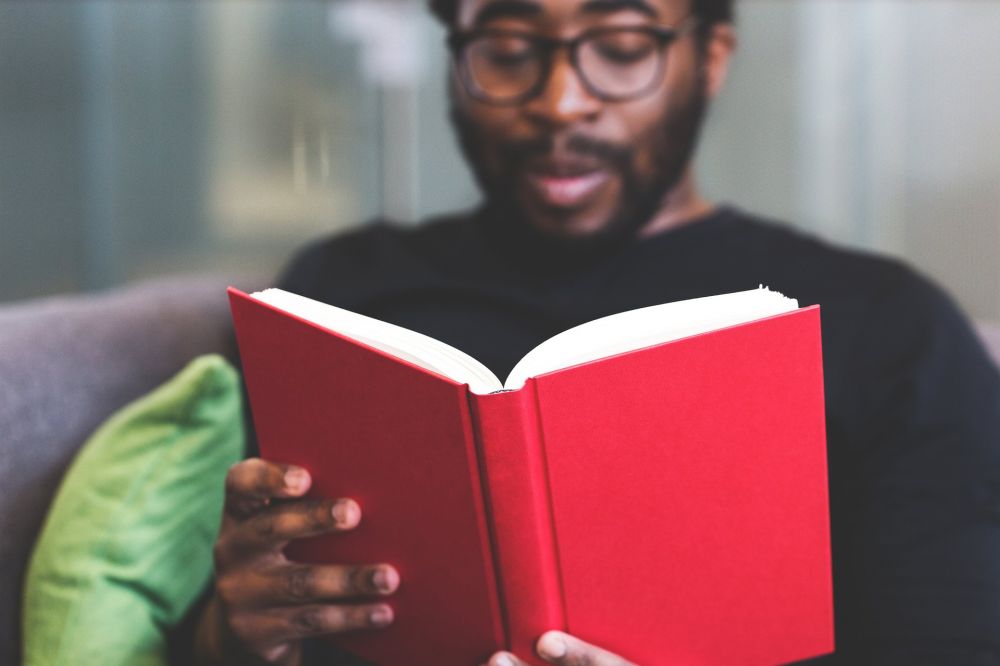Brilio.net - Kata explanation dalam suatu Bahasa Inggris, pastinya sudah tidak asing lagi. Di dunia pendidikan atau kehidupan sehari-hari seringkali menjumpai explanation.
Explanation text adalah sebuah teks yang menjelaskan tentang terjadinya suatu proses. Teks ini hampir mirip dengan procedure text. Bedanya jika procedure text memiliki tujuan untuk menjelaskan cara melakukan sesuatu.
Explanation text atau teks eksplanasi memiliki tujuan untuk menjelaskan berbagai kejadian entah itu berkaitan dengan sosial, alam dan budaya. Contohnya adalah proses terjadinya hujan, cara bekerja organ tubuh manusia, bagaimana mengoperasikan suatu mesin dan lain-lain.
Seperti jenis teks lainnya, explanation text memiliki struktur:
1. Judul
2. Pernyataan pembuka
3. Sequencing (bagian)
4. Konklusi (kesimpulan)
5. Visual
Kemudian agar tidak bingung, ada beberapa ciri-ciri khusus explanation text yang membedakan dengan jenis teks lainnya.
* Menggunakan simple present tense
* Menggunakan kata hubung kronologi seperti next, first, then, to begin with, dan lainnya
* Menggunakan noun phrases
* Menggunakan technical terms
* Menggunakan passive voice yang bertujuan untuk menekankan fokus pada kejadian
* Menggunakan action verbs yang merupakan kata kerja untuk menjelaskan aksi
Berikut ini ulasan mengenai contoh soal explanation text dan kunci jawabannya, yang telah dirangkum brilio.net dari berbagai sumber pada Kamis (6/10).
Contoh soal explanation text yang mudah dipelajari.
foto: pixabay.com
1. Human body is made up of countless millions of cells. Food is needed to built up new cells and replace the worn out cells. However, the food that we take must be changed into substances that can be carried in the blood to the places where they are needed. This process is called digestion.
The first digestive process takes place in the mouth. The food we eat is broken up into small pieces by the action of teeth, mixed with saliva, a juice secreted by glands in the mouth. Saliva contains digestive juice which moisten the food, so it can be swallowed easily.
From the mouth, food passes through the esophagus (the food passage) into the stomach. Here, the food is mixed with the juices secreted by the cells in the stomach for several hours. Then the food enters the small intestine. All the time the muscular walls of the intestine are squeezing, mixing and moving the food onwards.
In a few hours, the food changes into acids. These are soon absorbed by the villi (microscopic branch projections from the intestine walls) and passed into the bloodstream.
What is the text about?
A. The digestive system
B. The digestive juice
C. The method of the digestive system
D. The process of intestine work
E. The food substances
Answer: A
2. Have you ever wondered how people get chocolate from? In this article we’ll enter the amazing world of chocolate so you can understand exactly what you’re eating.
Chocolate starts with a tree called the cacao tree. This tree grows in equatorial regions, especially in places such as South America, Africa, and Indonesia. The cacao tree produces a fruit about the size of a small pine apple. Inside the fruit are the tree’s seeds, also known as cocoa beans.
The beans are fermented for about a week, dried in the sun and then shipped to the chocolate maker. The chocolate maker starts by roasting the beans to bring out the flavour. Different beans from different places have different qualities and flavor, so they are often sorted and blended to produce a distinctive mix. Next, the roasted beans are winnowed. Winnowing removes the meat nib of the cacao bean from its shell. Then, the nibs are blended. The blended nibs are ground to make it a liquid. The liquid is called chocolate liquor. It tastes bitter. All seeds contain some amount of fat, and cacao beans are not different. However, cacao beans are half fat, which is why the ground nibs form liquid. It’s pure bitter chocolate.
The third paragraph focuses on ...
A. The process of producing chocolate
B. How to produce the cocoa flavour
C. Where chocolate comes from
D. The chocolate liquor
E. The cacao fruit
Answer: A
3. Have you ever wondered how people get chocolate from? In this article we’ll enter the amazing world of chocolate so you can understand exactly what you’re eating.
Chocolate starts with a tree called the cacao tree. This tree grows in equatorial regions, especially in places such as South America, Africa, and Indonesia. The cacao tree produces a fruit about the size of a small pine apple. Inside the fruit are the tree’s seeds, also known as cocoa beans.
The beans are fermented for about a week, dried in the sun and then shipped to the chocolate maker. The chocolate maker starts by roasting the beans to bring out the flavour.
Different beans from different places have different qualities and flavor, so they are often sorted and blended to produce a distinctive mix. Next, the roasted beans are winnowed. Winnowing removes the meat nib of the cacao bean from its shell.
Then, the nibs are blended. The blended nibs are ground to make it a liquid. The liquid is called chocolate liquor. It tastes bitter. All seeds contain some amount of fat, and cacao beans are not different.
However, cacao beans are half fat, which is why the ground nibs form liquid. It’s pure bitter chocolate.
How does the chocolate maker start to make chocolate?
A. Fermenting the beans
B. By roasting the beans
C. By blending the beans
D. By sorting the beans
E. By drying the beans
Answer: B
Questions for number 4-6
4. Recycling is a collection, processing, and reuse of materials that would otherwise be thrown away. Materials ranging from precious metals to broken glass, from old newspapers to plastic spoons, can be recycled. The recycling process reclaims the original material and uses it in new products.
In general, using recycled materials to make new products costs less and requires less energy than using new materials. Recycling can also reduce pollution, either by reducing the demand for high-pollution alternatives or by minimizing the amount of pollution produced during the manufacturing process.
Paper products that can be recycled include cardboard containers, wrapping paper, and office paper. The most commonly recycled paper product is newsprint. In newspaper recycling, old newspapers are collected and searched for contaminants such as plastic bags and aluminum foil. The paper goes to a processing plant where it is mixed with hot water and turned into pulp in a machine that works much like a big kitchen blender. The pulp is screened and filtered to remove smaller contaminants. The pulp then goes to a large vat where the ink separates from the paper fibers and fl oats to the surface. The ink is skimmed off, dried and reused as ink or burned as boiler fuel. The cleaned pulp is mixed with new wood fibers to be made into paper again.
Experts estimate the average office worker generates about 5 kg of wastepaper per month. Every ton of paper that is recycled saves about 1.4 cu m (about 50 cu ft) of landfill space. One ton of recycled paper saves 17 pulpwood trees (trees used to produce paper).
What is the third step of recycling paper products?
A. Collect and search for contaminants such as plastic bags and aluminium foil
B. Mix the paper with hot water in a blender which turns it into pulp
C. Screen and filter the pulp to remove smaller contaminants
D. Put the pulp to a large vat to separate the ink from the paper fibres
E. Mix the pulp with new wood fibres to be made into paper again
Answer: C
5. Which of the following is NOT the benefit of recycling?
A. It costs much money for the process of recycling
B. It costs less to make new products
C. It requires less energy
D. It can reduce pollution
E. It reduces the demand for high-pollution alternatives
Answer: E
6. The following things can be recycled, EXCEPT ...
A. Precious metals
B. Broken glass
C. Old newspapers
D. Plastic spoons
E. Fresh vegetables and fruits
Answer:E
Questions for number 7 - 10!
What is photosynthesis? Photosynthesis is a food-making process that occurs in green plants. It is the chief function of leaves. The word photosynthesis means putting together with light. Green plants use energy from light to combine carbon dioxide and water to make sugar and other chemical compounds.
How is the light used in photosynthesis?
The light used in photosynthesis is absorbed by a green pigment called chlorophyll. Each food-making cell in a plant leaf contains chlorophyll in small bodies called chloroplasts. In chloroplast, light energy causes water drawn form the soil to split into hydrogen and oxygen.
What are the steps of photosynthesis process? Let me tell you the process of photosynthesis, in a series of complicated steps, the hydrogen combines with carbon dioxide from the air, forming a simple sugar. Oxygen from the water molecules is given off in the process. From sugar together with nitrogen, sulphur, and phosporus from the soil-green plants can make starch, fat, protein, vitamins, and other complex compounds essential for life. Photosynthesis provides the chemical energy that is needed to produced these compounds.
7. What step after the hydrogen combines with carbon dioxide from the air ...
A. Photosynthesis provides the chemical energy that is needed to produced these compounds
B. Water drawn form the soil to split into hydrogen and oxygen
C. Food-making process that occurs in green plants
D. Oxygen from the water molecules is given off in the process
E. Phosporus from the soil-green plants can make starch, fat, protein, vitamins, and other complex compounds essential for life
Answer: D
8. What are photosynthesis need ...
A. Water, light, oxygen, worm
B. Soil, chlorophyll, sun, human
C. Light, Carbon dioxide, humus
D. Candle, vitamins, hydrogen
E. Bug, air, oxigen, food
Answer: C
9. What the product of photosynthesis ...
A. Sugar
B. Food and O2
C. Root
D. Food
E. Branch
Answer: B
10. What kind of the text ...
A. Narrative text
B. Hortatory text
C. Descussion text
D. Explanation text
E. Descriptive text
Answer: D
Magang: Annisa Dheaning Triprasiwi
Contoh soal explanation text sebagai referensi belajar.
foto: pixabay.com
11. The sense of taste is one of a person’s five senses. We taste with the help of taste-buds in the tongue.
There are four main kinds of taste: sweet, sour, salty, and bitter. All other tastes are just mixtures of two or more of these main types.
The surface of the tongue has more than fifteen thousand taste-buds (or cells). These are connected to the brain by special nerves which send the so-called 'tastes messages.
When the tongue comes into contact with food of any kind, the taste-buds will pick up the taste. The nerves then send a message to the brain. This will make us aware of the taste. All this happens in just a few seconds.
There are four kinds of taste-buds, each of which is sensitive to only a particular taste. These four groups are located in different parts of the tongue.
The taste-buds for salty and sweet tastes are found round the tip of the tongue and along its sides. Sour tastes can be picked up only at the sides of the tongue. The taste-buds of the bitter taste are found at the innermost edge of the tongue. There are taste-buds at the centre of the tongue.
The senses of smell and sight can affect taste. The good smell of food increases its taste. Similarly, attractive colours can make food appear tastier and more delicious. If food does not smell good or is dull-coloured, it will look tasty and may not taste good at all.
Very hot or cold sensations can make the taste-buds insensitive. Food that is too hot or too cold, when placed in the mouth, will have no tastes at all.
When we eat very hot or cold food ...
A. The food will lose its taste
B. The food won’t smell good
C. The taste of the food increases
D. The taste-buds will be sensitive
E. The taste-buds will be very, responsive
Answer: A
12. A cell phone is a great gadget in this modern world. What is a cell phone? A cell phone is actually a radio in certain way. Like a radio, by a cell phone we can communicate to other people in real time. Million people use cell phone for their communication. Even nowadays, people use cell phones to communicate in voice, written and data. Alexander Graham Bell is the person who make great change in the way people communicate to each other. He invented a telephone in 1876. While wireless radio was formally known in 18994 presented by Guglielmo Marconi. By these two technologies, then a cell phone was born. However do you know how actually cell phones work?
This short explanation on how a cell phone work is really wonderful. A cell phone or in long term “cellular telephone’ works by transmitting signals of radio to towers of cellular. The towers are networked to a central switching station. The connection usually uses wire, fiber optic-cables, or microwave.
Then the central switching station which handles calls in certain given area is directed connected to the wire-based telephone system. Cellulars are pick up by the towers and relayed to another cellular telephone user or the user of wire-based telephone network.
the towers vary in the capacity and capability to receive signals. Some can receive the signal from short distance and the others can receive more distance. However, there are usually more than one tower in certain given area so that the system can handle the increasing telephone traffic.
What the main idea of paragraph three ...
A. How to use the telephone
B. The founder of telephone
C. The part of telephone
D. Function of telephone
E. How to make the telephone
Answer: C
13. Silkworms live for only two or three days after laying eggs. About 36,000 to 50,000 eggs are laid, and these are carefully stored at the silkworm farm until they are ready to hatch. The eggs hatch into caterpillars, which feed on mulberry leaves. Soon, the caterpillars are ready to spin their cocoons. Not all caterpillars can spin silk cocoons. Only the caterpillars of a silkworm moth known as ‘Bombyx mari’ can do such spinning. This caterpillar has special glands which secrete liquid silk through its lower lip. The liquid produced later hardens to form tine strands.
The caterpillar makes its cocoons using these strands. The threads on the outside of the cocoon are rough, while those inside are soft and smooth.
Some fully-spun cocoons are heated. This kills the pupa inside. The cocoons are then put into hot water to loosen the fine threads. Finally, these threads are reeled off the cocoons.
The length of unbroken thread produced by a single cocoon measures about one-and-a-half kilometers. Being twisted together several of these threads make single woven materials.
What are mulberry leaves for ...
A. Feeding caterpillars
B. Spinning cocoons.
C. Storing threads.
D. Hatching eggs.
E. Laying eggs.
Answer: A
Question for 14 - 17!
A kite is an object which is made from a light material stretched over a frame. Due to its light material a kite will lift off the ground and fly when it is tilted into the wind.
A kite is uses wind to make it fly because it is heavier than air. When wind travels over the surface of the kite, it is split into two streams of air. One stream of the air goes over the kite while the second stream goes under the kite.
The upper stream above the kite. The lower stream hits the kite at a shallow angle and creates an area of high pressure.
The high pressure area has a pushing effect while the low pressure area has a pulling effect. The combination of push and pull can creates enough force to lift the kite into the air.
Kites have been known for thousand of years. They are used for military or scientific purposes. Todays kites are much used for leisure and competition.
14. What media which use by kite to fly?
A. Air
B. Water
C. Ground
D. Light
E. Wind
Answer: E
15. The first Word of “ it” at the first line of paraghraph two refers to ...
A. Wind
B. Air
C. Kite
D. Frame
E. Fly
Answer: C
16. What is the function of the upper stream?
A. Hits the kite at a shallow angle
B. Creates an area of high pressure
C. Creates an area of middle pressure
D. Creates an area of low pressure
E. Give space for kite to fly
Answer: D
17. Bassed on the text, what is the function of kite at past?
A. Used for competition
B. Used for military
C. Used for sent message
D. Used for sent money
E. Used for keep home for annoying evil
Answer: B
Recommended By Editor
- 7 Contoh teks ulasan film beserta penjelasan dan strukturnya
- 9 Contoh teks tanggapan, beserta ciri-ciri dan strukturnya
- 5 Contoh teks ulasan buku lengkap dengan penjelasan dan strukturnya
- 7 Contoh teks biografi bahasa Inggris serta penjelasan dan strukturnya
- 9 Contoh teks pembawa acara formal dan nonformal



















































